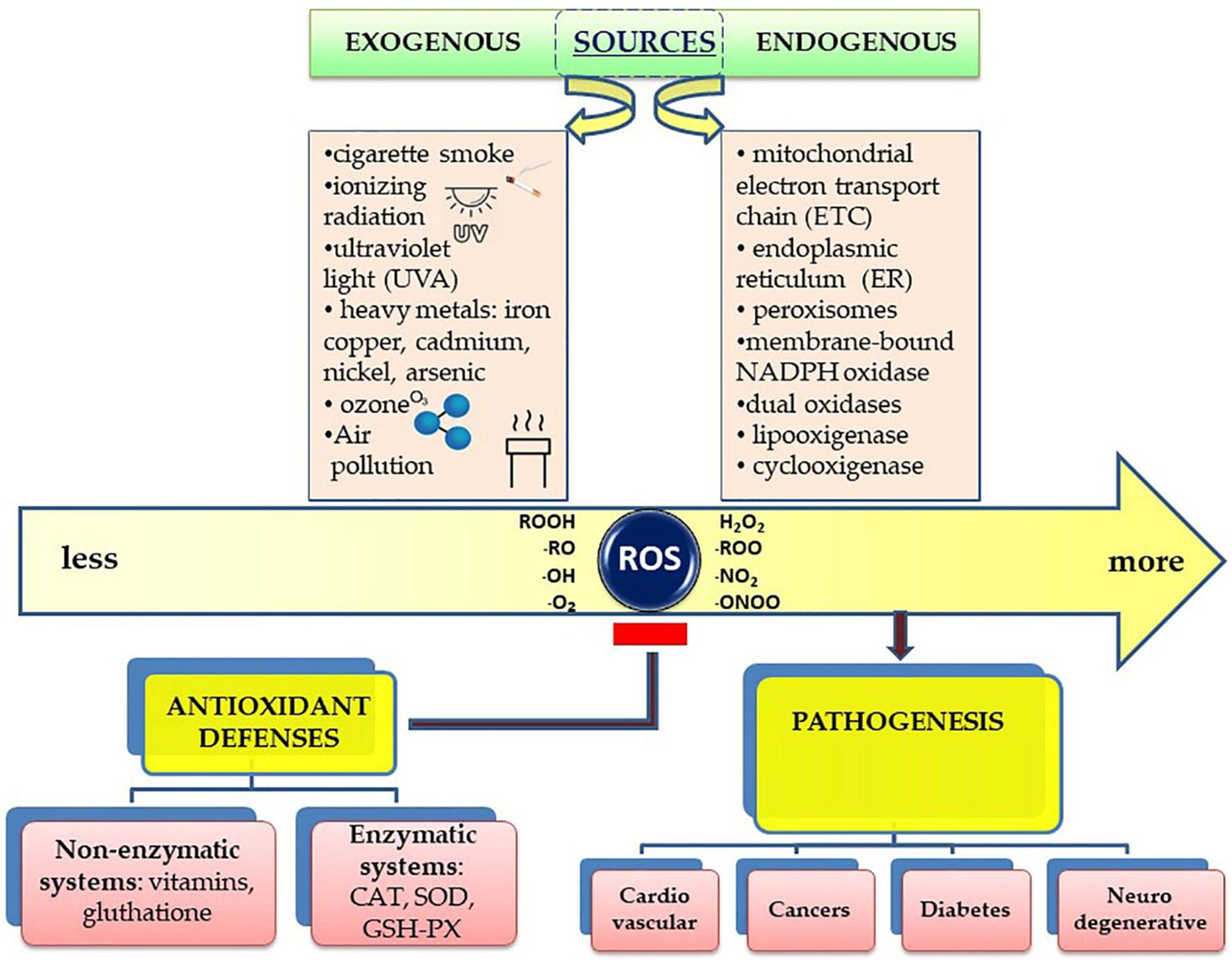BREAKTHROUGH: The Spike Protein, via the Endothelium (SPED), Induces A State of Systemic, Chronic ROS Production Leading to Multiple Pathologies
Ribeiro, et al. demonstrate how the Spike Protein may induce a state of systemic, chronic elevated ROS production which satisfactorily explains post-Covid/Spike Protein exposure pathology.
Schematic presentation of the sources of free radicals and their effects on the human body.
It was one of those moments when the clouds lift, and you can suddenly see for miles and miles with complete clarity. I have been studying a new paper by Ribeiro et al. The title belies the staggering importance of the paper.
Inhibition of HIF-2α Pathway as a Potential Therapeutic Strategy for Endothelial Dysfunction in Post-COVID Syndrome
The headline, indeed, does not tell us what the most important finding in the paper is. This finding completely explains all the aging/pathological implications of what I predicted the Spike Protein would do to the body: Excessive ROS Production.
I had seen this over three years ago, in 2021.
IS THE SPIKE PROTEIN OF SARS-CoV-2 A MITOCHONDRIAL “TORPEDO?”
https://wmcresearch.org/is-the-spike-protein-of-sars-cov-2-a-mitochondrial-torpedo/
Ribeiro, et al. Showed that the S1 unit of the Spike Protein does, indeed, significantly increase ROS production in cells and in the mitochondria.
Next we tested whether S1 exposure affects ROS and NO production in HREC. ROS significantly increased in a time-dependent manner (3 hours, p=0.014; 4 hours, p= 0.008; 5 hours, p=0.010; 6 hours, p=0.025) upon S1 treatment (Figure 5A). Additionally, mitochondrial ROS production also rose in cells treated with S1 (Figure 5B).
What is even more concerning is that, as I have also predicted, the plasma of those with Long COVID performs precisely the same function.
Our findings revealed a time-dependent rise in cellular ROS (1 hour, p=0.0086; 2 hours, p=0.0064; 3 hours, p=0.0.0083; 4 hours, p= 0.012; 5 hours, p=0.0321; 6 hours, p=0.0298) following treatment with PCS-plasma (Figure 6A). Additionally, mitochondrial ROS significantly increased 4 hours post-treatment (Figure 6B).
Inhibition of HIF-2α Pathway as a Potential Therapeutic Strategy for Endothelial Dysfunction in Post-COVID Syndrome
https://www.medrxiv.org/content/10.1101/2024.09.10.24313403v1.full-text
What does this mean?
This was the moment the clouds lifted. The moment of clarity. Though we need more studies to provide proof, what I am almost certain is occurring is that the Spike Protein damages the Endothelium, inducing what I have termed Spike Protein Endothelial Disease (SPED). SPED causes the barrier of the Endothelium to lose integrity. This then allows the S1 unit to penetrate organs and induce excessive ROS production, leading to the plethora of disease states we are universally observing.
It is like a lethal can opener.
Also, we need randomly sample the blood supply to determine if Spike-exposed plasma is inducing the same effects.
Without question. The Spike Protein of SARS-CoV-2 must be avoided at all costs. A state of chronic ROS production cannot be endured by the body. This is certainly how it is aging us. Fortunately, we can avoid massive doses of Spike and reduce duration/severity of infection. We can also heal the damage done and prevent future damage.
I will be working on researching the state of Spike reverse transcription. That is a separate, yet equally important factor which we must determine.
Thank you, as always, for your support, dialogue and readership.




So what supplement would turn this mechanism off and restore the pathway of reverse the effect? NAC as an ROS reduction AGENT? Does Circumun act on this pathway or ROS?
Thank you, Walter! How I wish these papers had 10 million likes. Thank you for staying in this foxhole; your work is much appreciated!